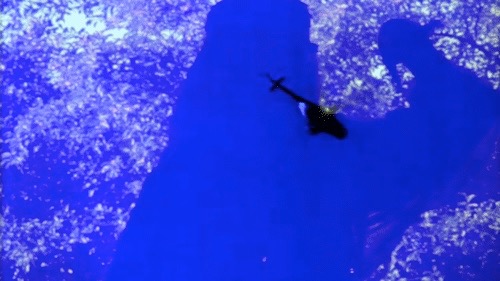The Dikeou Collection welcomes Collective Misnomer as they present What a Place to Be Alive: Moving Images from Toronto, a small sampling of experimental works made by artists living in Hollywood North. Unlike films made in the Hollywood studio system, the selection of works in this survey are made by moving images artists who are free to pursue their own personal visions. These works offer a glimpse into the formal and personal obsessions of those who now reside near Sugar Beach. This event is open to public and will take place on Friday, November 10 at Dikeou Pop-Up: Colfax, 312 E Colfax Ave. Doors open at 7:30 pm.
|
Through a long-distance call between Canada and Afghanistan, two realities collide in Weeda Azim’s Herat in my Head in my Heart, a work that juxtaposes feelings of estranged nostalgia with the realities of war. Nicholas Kovats’ Apucikam, Megyunk Haza. [Poppa…we are going home] also explores nostalgia, but through a portrait of the artist’s father. Part portrait, part travelogue, Kovats returns to Hungary after 27 years, providing a glimpse into a landscape that has witnessed substantial change. No long-distance charges apply when you call the 1-800 number in Thirza Cuthand’s 2 Spirit Introductory Special $19.99, a satirical infomercial that offers a well needed service, unlimited telephone access to traditional knowledge and support. Sue Johnson’s The Toronto Reels and Mikel Guillen’s Intermission offer a glimpse into Toronto’s subconscious. Johnson’s super 8 home movies provide a detailed look into Occult Toronto through a tour of Toronto’s psychic and occult shops, while Guillen uses the media reports surrounding the disappearance of teenager Mariam Makhniashvili to examine a city left searching for answers after living in suspended hope for over two years. Mark Loeser’s Sugar Beach uses several multiple exposures on a single roll of 35mm film to showcase Toronto’s favorite man-made, faux beach directly across from the Redpath Sugar Refinery. In contrast to Sugar Beach, a pseudo-beach where one can’t swim in the water and the sand doesn’t reach the sea, Sara MacLean’s Fore-and-Aft was literally created in the Bay of Fundy in Nova Scotia using celluloid that was buried in the seabed and dragged through the ocean behind a boat. Tactile evidence of the repetition and changes wrought by the tidal cycles. Finally, the sea plays a different function in Stephanie Comilang’s Lumapit Sa Akin, Paraiso [Come to Me, Paradise]. In the film, the sea becomes an abstract space separating Filipina workers living in Hong Kong from their homeland. Similar to Herat in my Head, Lumapit Sa Akin explores feelings of estranged nostalgia, but within a different political situation, that of poverty, forced labor, exploitation and human trafficking. Working against a harsh and unjust economic and political reality, pockets of paradise are formed by communally gathering and temporarily transforming public space into private sanctuaries. The internet, like the long-distance phone, provide the utopian potential of a collective consciousness, a way of bringing us together. Collective Misnomer is an artist run project focused on exhibiting contemporary time-based art (sound, video, performance) in Denver, Colorado. For more information visit their website. |

